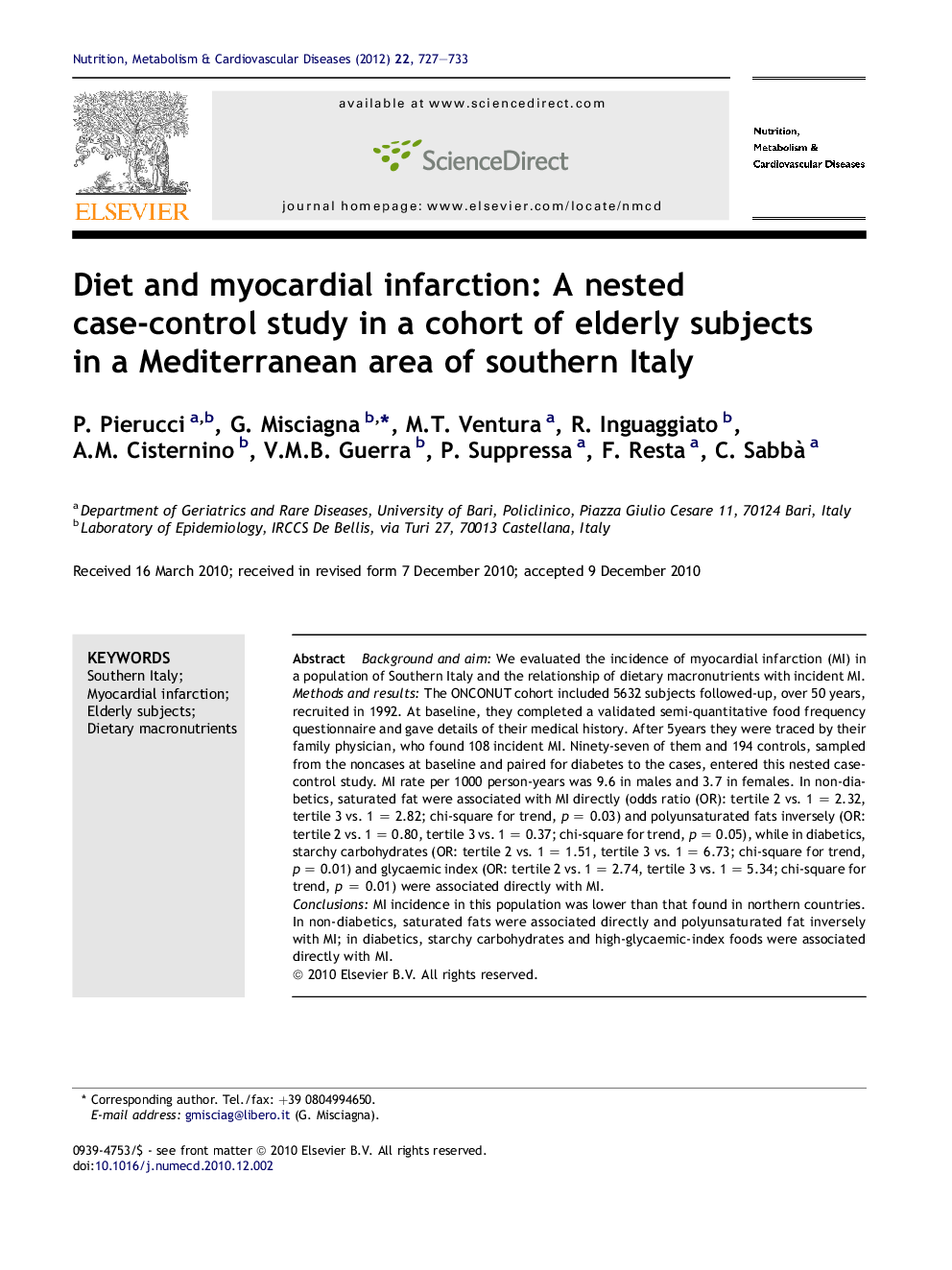| کد مقاله | کد نشریه | سال انتشار | مقاله انگلیسی | نسخه تمام متن |
|---|---|---|---|---|
| 3002458 | 1180726 | 2012 | 7 صفحه PDF | دانلود رایگان |

Background and aimWe evaluated the incidence of myocardial infarction (MI) in a population of Southern Italy and the relationship of dietary macronutrients with incident MI.Methods and resultsThe ONCONUT cohort included 5632 subjects followed-up, over 50 years, recruited in 1992. At baseline, they completed a validated semi-quantitative food frequency questionnaire and gave details of their medical history. After 5years they were traced by their family physician, who found 108 incident MI. Ninety-seven of them and 194 controls, sampled from the noncases at baseline and paired for diabetes to the cases, entered this nested case-control study. MI rate per 1000 person-years was 9.6 in males and 3.7 in females. In non-diabetics, saturated fat were associated with MI directly (odds ratio (OR): tertile 2 vs. 1 = 2.32, tertile 3 vs. 1 = 2.82; chi-square for trend, p = 0.03) and polyunsaturated fats inversely (OR: tertile 2 vs. 1 = 0.80, tertile 3 vs. 1 = 0.37; chi-square for trend, p = 0.05), while in diabetics, starchy carbohydrates (OR: tertile 2 vs. 1 = 1.51, tertile 3 vs. 1 = 6.73; chi-square for trend, p = 0.01) and glycaemic index (OR: tertile 2 vs. 1 = 2.74, tertile 3 vs. 1 = 5.34; chi-square for trend, p = 0.01) were associated directly with MI.ConclusionsMI incidence in this population was lower than that found in northern countries. In non-diabetics, saturated fats were associated directly and polyunsaturated fat inversely with MI; in diabetics, starchy carbohydrates and high-glycaemic-index foods were associated directly with MI.
Journal: Nutrition, Metabolism and Cardiovascular Diseases - Volume 22, Issue 9, September 2012, Pages 727–733